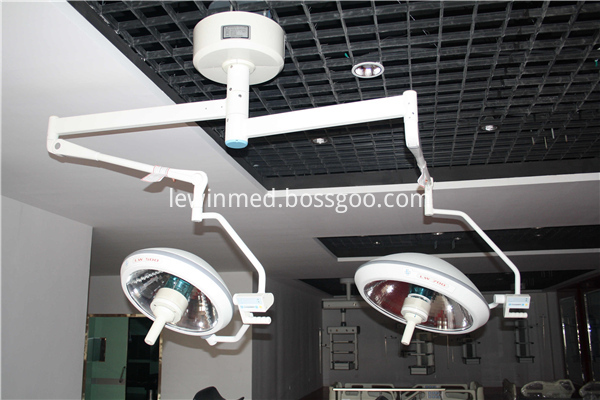The scientific name is Artogeia (Pieris) rapae (Linnaeus) Lepidoptera, Pieridae. Synonymous rapae (L.). Alias ​​white butterfly, white butterfly. The larva is called cabbage caterpillar. Distributed throughout the country. Host plants such as rapeseed, cabbage, broccoli, cabbage, radish and other cruciferous vegetables, are especially preferred to contain mustard oil glycosides, cabbage smooth and hairless cabbage and broccoli. The larvae are eaten by the leaves. Before the 2nd instar, they can only eat the leaves and leave a transparent layer of skin. After 3rd instar, they can eat the entire leaf. If the weight is too light, the leaves will only affect the growth and development of the plants and reduce the yield. In addition, insect feces contaminated cauliflower bulbs, reducing commodity value. In cabbage, insect worms can also cause soft rot. Morphological characteristics Adult body length 12-20mm, 45-55mm wingspan; body gray black, white wings, black gray apex, female butterfly wings have 2 significant black round spot, male only 1 significant dark spots. Egg-shaped bottle, about 1mm high, about 0.4mm wide, the surface with longitudinal ridges and horizontal grid, initially milky white, after the orange-yellow. The larvae are blue-green, with a pale yellow dorsal line and a greenish-white ventral surface. The body surface is covered by tiny black hairy tumours with yellow spots along the valve line. A total of 5 years old. It is 18-21mm long, spindle-shaped, with a central swelling and angular protrusions, green or brown. Control methods (1) Biological control can use bacterial insecticides, such as domestic B. t. Emulsions or liquids of the bacillus erinaceus, usually 500 to 800 times dilution. (2) Chemical control can use 50% phoxim EC 1000 times solution or 20% triazophos EC 700 times, 25% ECS 800 times, 44% quick Caesar 1000 times, 10% SIBO Kai Emulsion 2000 times, 0.12% Tianli E (insecticide) WP 1000 times, 2.5% Baoji 2000 times, 5% Ruigen suspension 1500 times. (3) Physiological control can use insect growth regulators, also known as insect chitin synthesis inhibitors. Such as domestic Diflubenzuron No. 1 (Auropteryx, Diflubenzuron, Fluoro-urea, Difluorourea, Eliminator) or 20%, 25% Diflubenzuron No. 3 (Sue No. 1) Suspension 500 1000 times the liquid, these agents are slow, usually only when the larval age changes make the pests dead, should be sprayed earlier. For this reason, these agents often use the formulation of the glue suspension, spray rain water erosion, efficacy can be maintained for half a month the above.
LEWIN Halogen Operating Lamp series Operating shadowless lamp can widely be used in diversified operation occasion to meet the demand of the illumination, CAD/CAM overall reflection optical system and a multi-revolving surface reflector of more than 4000 mirrors, its illumine depth is up to 1200mm,the lamp could reach a center illumination of 80000-160000lux, Halogen Operating Lamp is the ideal illumination instrument of the modern operating theater.Advanced Irsorb filter can absorb 99.6% infrared and 99.8% ultraviolet,and special heat transfer design, an excellent cold-light effect.
Halogen Operating Lamp Halogen Operating Lamp,Halogen Surgery Lamp,Halogen Surgical Light,Halogen Operating Light Shandong Lewin Medical Equipment Co., Ltd. , https://www.operatinglight.nl
Life habits occur in different generations, different in duration, Inner Mongolia, Liaoning, Hebei, 4-5 generations, Shanghai 5-6 generations, Nanjing 7th generation, Wuhan, Hangzhou 8 generations, Changsha 8-9 generations. All over the country, they usually spend more time in winter on the walls near the vegetable plots or in fences, trunks, weeds, and other places. They are usually selected on the back side of the sun. In early spring, Hunchun began to emerge in early April, spawning nectar while spawning and spawning. Spawning eggs, prolific in the back of the leaves, an average of about 120 eggs per woman. The starting temperature of egg development was 8.4°C, the effective accumulated temperature was 56.4 days, and the developmental period was 4-8 days. The developmental temperature of larvae was 6°C, the effective accumulated temperature was 217 days, and the development duration was 11-22 days. The developmental starting temperature is 7°C, the effective accumulated temperature is 150.1 days, and the developmental period (excluding wintering) is 5 to 16 days. The adult life span is about 5 days. The optimum temperature of cabbage caterpillar development is 20-25°C and relative humidity is about 76%, which is close to the temperature and humidity needed for the development of cabbage crops. Therefore, it is in the northern spring (April-June) and autumn (August-October). During the large-scale cultivation of cabbage, the emergence of cabbage caterpillar also formed two peaks in spring and autumn. In summer, due to high temperature drying and a large reduction in cabbage cultivation area, the emergence of cabbage caterpillars also presented a low ebb. It is known that there are 70 or more natural enemies. The main parasitic natural enemies are Trichogramma evanescens (Westwood) in the egg stage, Apanteles rubecula (Marshall) in the larval stage, and Nepenthes velutipes (also known as the yellow velvet bee). A.g10meratus (L.)] and granulosis virus; Pteromalus Puparμm (L.) et al.

Rape cabbage butterfly
Next Article
Diagnosis and Treatment of Cattle Crows